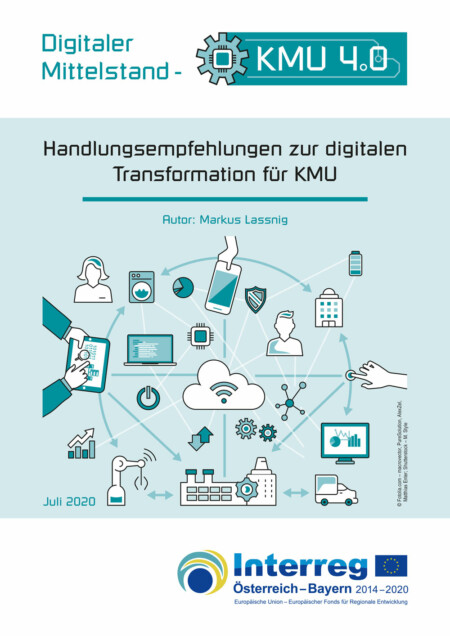
SMEs: 7 Recommendations for Action for Digital Transformation
Mobile internet, social media or online shopping are now an integral part of our everyday life. Hardly anything has changed our society more than digitization in recent years. In the meantime, the digital transformation is also changing our business fundamentally. It is therefore important for companies to recognize new technologies and digital trends and to make them usable for the company.
Digital technologies offer companies numerous opportunities to tap new customer groups, make the company organization more efficient, or optimize the production and supply chains. This creates great opportunities for small and medium-sized companies in particular, because their smaller size and flatter organizational structures mean that they can respond to new challenges in the market more agile and more quickly than large companies.
At the same time, this trend also harbors risks. Digital technologies are shaking value chains, organizational structures, operational processes and revenue models – in short, entire companies. All sectors are affected. Only the degree and timing of the faults vary between industries. In addition, small and medium-sized companies run the risk of underestimating the importance and effects of digitization due to the great uncertainty surrounding investments in digitization projects and the comparatively low human and financial resources, and thus to leave considerable sales and savings potential unused. Experts agree that this can significantly reduce a company’s competitiveness in the medium to long term, because the digital transformation process leads to an increase in competitive pressure.
7 Concrete Recommendations for Action on How You Can Successfully Master the Digital Transformation of Your SME
1. Digitization and Corporate Strategy
2. Business Model Innovations
Proactively think about how you could expand your business model with digital technologies or even have to adjust it due to the market. Bear in mind that successful business model innovations are usually the result of an intensive development process, which is intended to ensure precise addressing of customer needs. Since new disruptive business models often cannot be built within the traditional business model due to conflicting goals, medium-sized companies should operate them in business units separate from the core business
3. Personnel Management and Personnel Development
4. Use of Digital Technologies for Customer Acquisition and Management
5. Efficient Uses of Data
6. Proactive Assurance of IT and Data Security and Data Protection
7. Use of Digital Platforms in Sales, Production and R&D
To the E-Paper
You can find further details on the seven recommendations for action and numerous case studies in the current e-paper “Recommendations for action on digital transformation for SMEs”.








